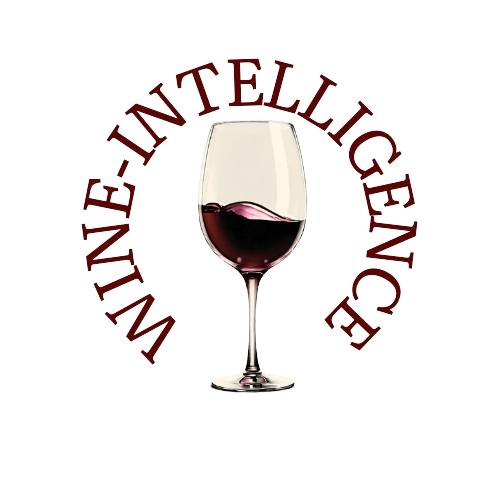Is wine losing its charm among the young? That’s the impression circulating in media headlines.
But a recent in-depth survey conducted by the Austrian Wine Marketing Board (ÖWM) together with market-mind offers a much more nuanced picture. Focused on Austrians aged 20 to 35, this study sheds light on how wine culture can evolve to stay relevant in the lives of Millennials and Gen Z—two generations that are shaping tomorrow's consumer behavior.
Austria's Domestic Market Under Pressure
Austria’s domestic wine market is critical: three out of four wine bottles are sold within the country. However, overall consumption has been steadily declining. From nearly 35 liters per capita in 1980, Austrians now consume just under 26 liters per year. Demographic shifts, changing social habits, and growing health consciousness are contributing to this trend.
Amid these changes, a recurring narrative claims that younger generations are disengaged from wine entirely. But is that claim fair—or too simplistic?
A Closer Look at Young Wine Drinkers
To understand what’s really happening, ÖWM surveyed 742 Austrians aged 20 to 35. Encouragingly, 84% consume alcohol, and 67% drink wine at least occasionally—putting wine ahead of beer (56%) and cocktails (53%) as Austria’s preferred alcoholic beverage. Moreover, 44% of wine drinkers enjoy wine weekly, with Gen Z surprisingly more frequent consumers than Millennials.
Although this marks a decrease from previous decades (in 2001, 53% drank wine weekly), it indicates that wine still holds ground among younger audiences.
Why Austrian Wines Still Matter
One especially positive insight: 98% of respondents either prefer Austrian wines or drink both domestic and foreign varieties, citing regionality, taste, and quality as key drivers. This loyalty is a strong foundation on which Austria’s wine industry can build.
Interestingly, Gen Z respondents rated wine as more attractive than Millennials did, suggesting a generational shift in openness to wine culture.
What’s Holding Them Back?
The primary barrier for non-wine drinkers isn't health or cost—it’s taste. A full 39% of respondents who avoid wine say they simply don’t like the taste. This insight signals that educational and experiential strategies will be key. Health-related reasons, like avoiding alcohol altogether, were surprisingly minimal.
For those who do drink wine occasionally, the challenge lies in accessibility, understanding, and confidence. Many feel overwhelmed by complex wine labels, large selections, or a perceived knowledge gap. This presents an opportunity: clear, simple communication and beginner-friendly guidance can reduce this intimidation factor and turn curiosity into loyalty.
How Wine Preferences Are Shifting
When asked about wine preferences, white wine dominated with 69%, followed by red wine (41%), rosé (35%), and sparkling wine (17%). Given that Austria’s vineyards are predominantly planted with white grapes, this alignment is promising.
Age also influences preferences: older respondents leaned more toward red wine, which may indicate that red wine is an acquired taste. To reach younger audiences, lighter, fruitier red wines with fewer tannins may serve as better gateways.
Stylistically, the appeal is clear:
- 64% prefer fruity-floral wines
- 51% enjoy light and fresh styles
This transcends color, reinforcing that an accessible and easy-drinking wine style resonates best with the younger crowd.
Where Do Young People Buy Wine?
Unsurprisingly, supermarkets lead the pack (69%) as the main wine purchasing point, especially for Gen Z. However, farm gate sales (38%) and specialist retailers (34%) still hold relevance, particularly among older Millennials. Online wine shops remain underutilized (17%), signaling potential for growth if made more engaging and user-friendly.
Wine at home remains minimal: 64% store up to 5 bottles, and only 17% have 11 or more. This suggests a lack of space, interest in aging wine, or awareness that wine can be cellared.
Social Settings Are Key to Wine Engagement
Young people mostly enjoy wine in social settings, like:
- Private celebrations (63%)
- With friends (56%)
- Romantic dates (55%)
- Holidays (55%)
- Dining out (54%)
This shows that wine is more than a beverage—it’s tied to emotional and memorable experiences. Marketing efforts should aim to reinforce this emotional value by creating opportunities for shared enjoyment.
From First Sip to Lasting Loyalty
The study reveals a crucial insight: young consumers often choose wines based on positive past experiences. First impressions matter, and tasting opportunities in informal, relaxed settings can convert occasional drinkers into loyal fans. This means wineries, retailers, and marketing bodies should prioritize events and platforms that allow for approachable, first-hand wine discovery.
What the Wine Industry Must Do
To win over younger consumers, Austria’s wine industry must:
- Demystify wine with clear language and simple presentation
- Offer lighter, fruit-forward wine styles
- Make tasting experiences more frequent and accessible
- Focus on emotional storytelling and social experiences
- Explore digital tools without losing the importance of real-life connections
The good news? Millennials and Gen Z haven't turned their backs on wine. But they need a more inclusive, intuitive, and inspiring entry point. With targeted strategies grounded in this new data, Austria has a clear path forward to keep its wine culture thriving.
Source: Austrian Wine Marketing Association (ÖWM)

